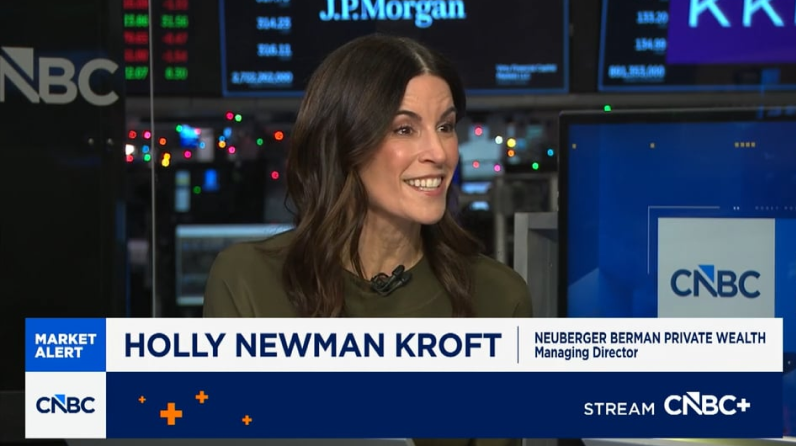

Private markets have become increasingly open to diversification-hungry individual investors.
The hunt for differentiated performance has become more difficult as equity and fixed income returns have become more correlated—this at a time when many investors are heavily exposed to those assets and the portfolio volatility that can come with them.
Private markets may be an option. Private market investments have historically been within the purview of institutions and ultra-wealthy individuals well-positioned for access, but innovation in investment structures has opened up the asset class to a broader cross-section of investors, increasing their practical potential as a foundational part of asset allocation.
At this point, exposure by individuals remains limited, with those investors representing only 16% of alternative fund assets, compared to their roughly 50% ownership of the world’s $275 trillion to $295 trillion in global assets1. However, this is changing and by next year, about 46% of high-net-worth investors are expected to have exposure to private markets, up from 29% in 20222.
Unfamiliarity and complexity have historically been stumbling blocks, and many investors remain skeptical of private markets. However, we believe that better understanding will help pave the way to increased exposure for individuals benefiting from these investment opportunities. We believe that the historical risk/return benefits of private markets isn’t just a talking point, but is directly related to the characteristics of the investments and in many cases their illiquidity. Private assets come in various flavors that could cater to specific investment goals and provide helpful diversification away from traditional investments. Finally, the structural enhancements described below have not only improved access but dealt with the illiquidity and return-pattern issues that may have inhibited some investors in the past.
Opportunity Beyond Public Markets
We believe that any discussion of private markets should explore the basic math that adds to their appeal. Simply put, the number of public companies has declined in recent decades, cutting off public investors from a large section of the economy. Although the market capitalization of public companies is far larger than for private companies, the vast majority of businesses overall are now private, with fewer than 15% of companies with revenues over $100 million publicly held1.
Companies often stay or go private because of the expense and scrutiny experienced in public markets, which can prove counterproductive in seeking to achieve long-term business goals. By nature, the introduction of private market assets to portfolios can add investment opportunity that is often very different from public market exposure.
Private markets are also relatively inefficient, which means that managers can often generate informational advantages. They typically enjoy more direct governance control, and, thus, have the potential to create value through strategic and operational improvements.
In terms of timing, managers often spend months sourcing and completing investments, and have various exit opportunities, including trade sales, sales to other private equity funds and initial public offerings, adding to their flexibility.
Key Sectors
There are several key sectors within the private space, including the following:
- Buyouts occur when the manager purchases control of a company with the goal of generating value by professionalizing the business, improving the management of cash flows, and introducing strategic changes. Companies are often mature and expected to provide relatively steady returns. Debt levels are often elevated but serviceable from repeatable cash flows.
- Venture capital businesses are typically newer, often with rapidly growing revenues and negative cash flows. They usually require regular infusions of capital to expand into new markets or reach new customers. Given their added risk, funds are likely to include more holdings than buyout funds.
- Growth companies usually fall somewhere between buyouts and venture in terms of business age and size, with managers working alongside the founders to expand more rapidly.
- Special situations involve the restructuring of distressed companies.
- Private credit consists of privately negotiated loans to companies. Investors typically receive a higher yield than for similar publicly traded debt in exchange for a degree of illiquidity. Interest payments are made on a periodic basis, allowing returns to be generated earlier than with private equity investments.
Means of Access
How can investors gain access to such opportunities?
Primary funds are the typical private equity structure. They generally have a lifespan of about 10 years and a cash-flow pattern known as the J Curve, where investors make initial capital commitments and wait for the manager to put that capital to work in companies, before it is harvested and returned along with any proceeds. For diversification, investors often choose a fund-of-funds structure, which provides exposure to more companies through multiple primary-fund investments.
In co-investments, investors invest alongside a private equity manager directly in portfolio companies. This reduces so-called “blind-pool” risk because the investor already knows the companies involved and can conduct specific due diligence. Investors who are paying management fees on another commingled strategy typically obtain access to co-investments without a fee. Such investments allow the immediate use of capital rather than following the J Curve pattern noted above.
Secondaries are a useful strategy that can offer earlier distributions than primary funds, making them an attractive way into the asset class. Investors may seek to sell their holdings in the secondary marketplace for a variety of reasons—including to lock in returns, manage exposures and access liquidity. Over time, the secondary market has gradually expanded and matured to become a standard means to gain access to already seasoned private equity investments, often at a small discount. Secondaries can provide diversification by vintage year, manager and underlying portfolio company.
Innovation
Historically, individuals have faced hurdles in accessing private equity due to investor qualification rules and high minimums, as well as long-term illiquidity and the J Curve.
However, as mentioned, new structural innovations have begun to mitigate these issues. For example, while traditional private funds typically require a net worth of $5 million, certain registered funds can be offered to investors with a net worth of $2.2 million, while investment minimums have also been reduced, sometimes to as low as $50,000.
The newer structures can also use the array of strategies above to help with illiquidity and mitigate the J Curve. For example, while primary investments traditionally served as the foundation of a portfolio, the increasing use of co-investments and secondaries, along with private credit, can help to both put money to work more quickly and generate income and return on capital in a shorter timeframe than many traditional funds.
The table below highlights the similarities and differences of the different structures.
Comparing Private Market Vehicles
Registered Funds
Can provide access to multiple segments and managers provides diversification within a single SEC-registered vehicle. Fund structure can offer simplified tax reporting, and lower investment minimums and qualification requirements.
Traditional Structures/Limited Partnerships
Can provide access to multiple segments and managers provides diversification within a single SEC-registered vehicle. Fund structure can offer simplified tax reporting, and lower investment minimums and qualification requirements. Range of available approaches, with differing levels of diversification and customization. Depending on the strategy, often include a capital-call period prior to potential distributions (the “J Curve”), and require long-term investment commitments. Vehicles typically have high minimums and qualification levels, and involve more complex K-1 tax filings.
Subcategories
| ‘Evergreen’ Fund | Commitment amount due upon closing with no capital calls and potentially improved liquidity through periodic repurchase offers. No defined fund life; will consistently allocate to investments over time. |
|---|---|
| ‘Drawdown’ Fund | Typical private equity fund structure, including periodic capital calls and distributions with a defined fund life (typically 10 years). |
| Commingled/ Diversified Funds (e.g., funds of funds) | Diversification across managers and sectors through a single investment. Regular commitment to ongoing fund vintages typically required to achieve vintage diversification. Traditional cash flow patterns, with some funds providing additional flexibility. The investor may have minimal control over the portfolio. |
| Individual Funds | Private equity exposure through commitments to multiple individual funds. Often in specific areas such as buyouts, venture, growth, secondaries, coinvest and private debt. Provides extensive investor control, but requires high levels of capital, research and resources. |
| Custom Account | Hybrid of commingled and individual funds. Affords professional manager involvement in an overall private equity portfolio, with a degree of investor control. Much higher capital allocation requirements. |
Considering Private Markets
Private markets offer opportunities that may not be available in the public space. In our view, built-in advantages have contributed to attractive risk-adjusted returns, while distinct investment characteristics make them an effective diversifier. That said, the choice of adding private markets exposure may come down to the specific circumstances of the individual. Engaging with advisors is an important first step in assessing whether private equity may make sense as part of your diversified portfolio.


VIDEO
The Kantor Group | Q4 Video Podcast | Reflecting on 2025 and Contemplating 2026

Accolades
The 2026 Forbes | SHOOK Best-In-State Wealth Management Teams list

INSIGHTS
CIO Notebook: Sluggish Job Growth Points to Steady Rates, For Now

MARKET COMMENTARY
Taking Stock of 2025

VIDEO
Holly Newman Kroft Featured on CNBC’s Money Movers December 18

VIDEO
The Kantor Group | Charles Kantor’s Year-End Reflections and Key Questions as We Head Into 2026

INSIGHTS
CIO Notebook: Dual Release of Delayed Non-Farm Payrolls Likely Supports Another Cut
INSIGHTS
Using Tax-Free Gifts for Wealth Transfer
INSIGHTS
CIO Notebook: Powell Plays the Middle as Fed Cuts Rates
MARKET COMMENTARY
Giving Thanks for Market Strength
INSIGHTS
CIO Notebook: September U.S. Non-Farm Payrolls Further Complicate the Narrative
VIDEO
Holly Newman Kroft Featured on CNBC’s Money Movers November 18
VIDEO
Plan for Peace of Mind with Our Estate Planning Organizer
1Source: Preqin, GlobalData, Bain, 2022.
2Source: Hamilton Lane, Barron’s, January 10, 2023.
This material is provided for informational and educational purposes only and nothing herein constitutes investment, legal, accounting or tax advice, or a recommendation to buy, sell or hold a security. This material is general in nature and is not directed to any category of investors and should not be regarded as individualized, a recommendation, investment advice or a suggestion to engage in or refrain from any investment-related course of action. Investment decisions and the appropriateness of this material should be made based on an investor’s individual objectives and circumstances and in consultation with his or her advisors. . Neuberger Berman, as well as its employees, does not provide tax or legal advice. You should consult your accountant, tax adviser and/or attorney for advice concerning your particular circumstances. Information is obtained from sources deemed reliable, but there is no representation or warranty as to its accuracy, completeness or reliability. All information is current as of the date of this material and is subject to change without notice. Any views or opinions expressed may not reflect those of the firm as a whole. Third-party economic or market estimates discussed herein may or may not be realized and no opinion or representation is being given regarding such estimates. Neuberger Berman products and services may not be available in all jurisdictions or to all client types. This material is not an offering of any specific fund or fund interests. An investor should consider a fund’s investment objectives, risks and fees and expenses carefully before investing. This and other important information can be found in the applicable fund’s prospectus or summary prospectus. Please read the prospectus or, if available, summary prospectus carefully before making an investment. Investing entails risks, including possible loss of principal. The use of tools cannot guarantee performance. Diversification does not guarantee profit or protect against loss in declining markets. As with any investment, there is the possibility of profit as well as the risk of loss. Investing entails risks, including possible loss of principal. Investments in hedge funds and private equity are speculative and involve a higher degree of risk than more traditional investments. Investments in hedge funds and private equity are intended for sophisticated investors only. Unless otherwise indicated, returns reflect reinvestment of dividends and distributions. Indexes are unmanaged and are not available for direct investment. Past performance is no guarantee of future results.
Neuberger Berman Investment Advisers LLC is a registered investment adviser. The “Neuberger Berman” name and logo are registered service marks of Neuberger Berman Group LLC.